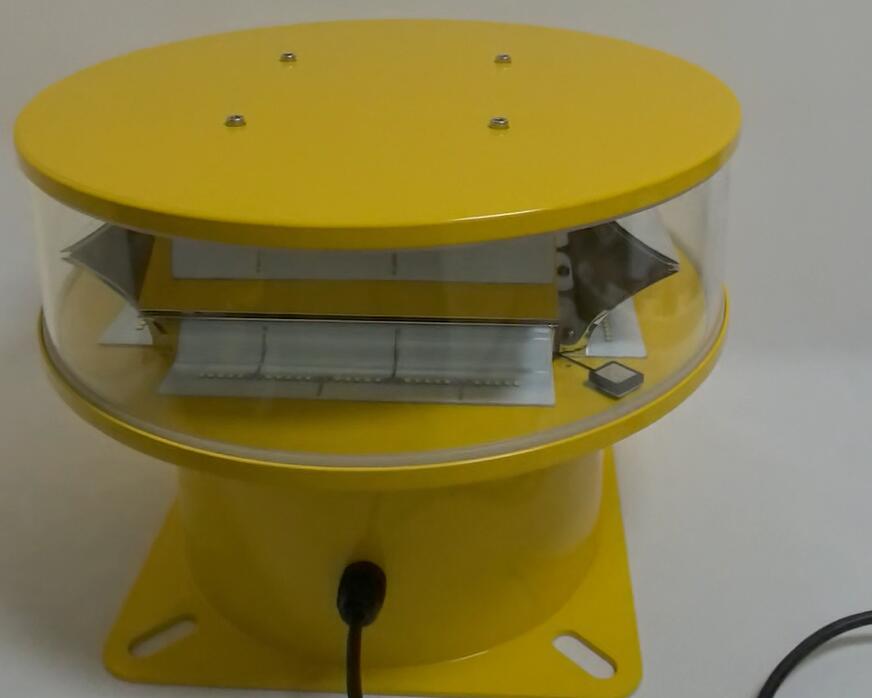Aircraft Warning Lights for Buildings: Ensuring Safety in Urban Skylines
As cities expand vertically with ever-taller skyscrapers and infrastructure, the risk of collisions between aircraft and buildings increases significantly. Aircraft warning lights for buildings serve as a critical safety measure, ensuring that high-rise structures remain visible to pilots, especially during nighttime and adverse weather conditions. This article explores the purpose, types, regulations, and technological advancements of aircraft warning lights for buildings, highlighting their essential role in modern aviation safety.
The Necessity of Aircraft Warning Lights for Buildings
The primary function of aircraft warning lights for buildings is to prevent mid-air and low-altitude collisions. Key reasons for their importance include:
Enhanced Visibility: High-intensity lights make buildings detectable from long distances, reducing the risk of accidents.
Regulatory Compliance: Aviation authorities mandate their installation on structures above certain heights.
Pilot Safety: Provides clear visual cues for navigation, particularly in densely built urban areas.
| Aircraft Warning Lights for Buildings |
Without these warning systems, tall structures could become invisible hazards, especially in fog, rain, or darkness.

Types of Aircraft Warning Lights for Buildings
Different lighting configurations are used depending on building height, location, and aviation regulations. The most common types include:
1. Low-Intensity Red Lights (LIRL)
Steady-burning or flashing red lights.
Typically used on structures between 45-150 meters (148-492 feet).
| Aircraft Warning Lights for Buildings |
Common on mid-rise buildings, cranes, and telecommunication towers.
2. Medium-Intensity White Strobe Lights (MIWL)
Bright white flashes visible during both day and night.
Installed on buildings exceeding 150 meters (492 feet).
Often used in combination with red lights for optimal visibility.
3. High-Intensity White Strobe Lights (HIWL)
Extremely bright strobes for very tall structures (e.g., skyscrapers).
Designed to be seen from long distances, even in bright daylight.
4. Dual Lighting Systems
Combine steady red lights with white strobes for 24/7 visibility.
Used in areas with high air traffic or complex urban landscapes.
Regulations Governing Aircraft Warning Lights for Buildings
To ensure uniformity and effectiveness, strict international and national standards apply:
ICAO (International Civil Aviation Organization): Sets global guidelines for obstacle lighting.
FAA (Federal Aviation Administration): Requires compliance with AC 70/7460-1L in the U.S.
EASA (European Union Aviation Safety Agency): Oversees European standards.
Non-compliance can result in penalties and increased liability in case of accidents.
Technological Advancements in Warning Light Systems
Modern aircraft warning lights for buildings incorporate cutting-edge innovations for better performance and sustainability:
1. LED Technology
Replaces traditional incandescent and halogen bulbs.
Benefits: Energy efficiency, longer lifespan, lower maintenance.
2. Solar-Powered Solutions
Ideal for buildings in remote areas or with limited power access.
Reduces electricity consumption and environmental impact.
3. Smart Monitoring & Automation
Remote diagnostics detect failures in real time.
Automatic brightness adjustment based on ambient light conditions.
4. Wireless Synchronization
Ensures precise timing for flashing sequences.
Reduces installation complexity in large structures.
Future Trends in Building Warning Light Systems
As urban airspace becomes more crowded, aircraft warning lights for buildings will continue evolving:
Integration with Urban Air Mobility (UAM): Adapting lighting for drone and eVTOL traffic.
AI-Based Predictive Maintenance: Minimizing downtime through failure forecasting.
Enhanced Eco-Friendly Designs: More solar and low-energy lighting solutions.
Aircraft warning lights for buildings are indispensable in safeguarding both aviation and urban infrastructure. With advancements in LED efficiency, smart monitoring, and regulatory compliance, these systems are becoming more reliable and sustainable. As cities keep growing upward, the role of aircraft warning lights for buildings will only become more critical in preventing collisions and ensuring safe skies for future air travel.
